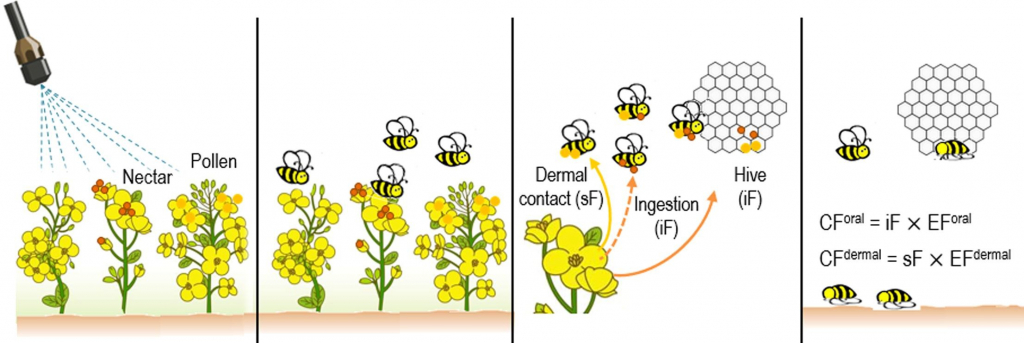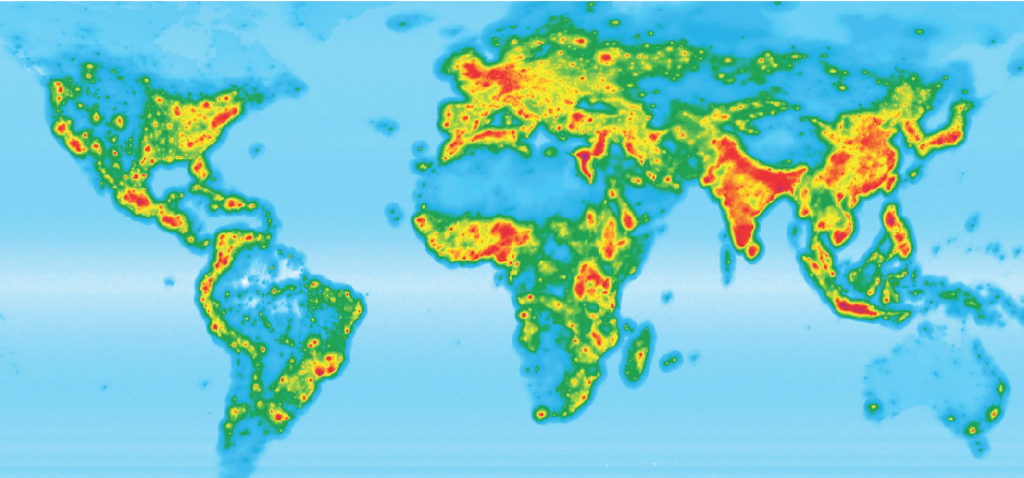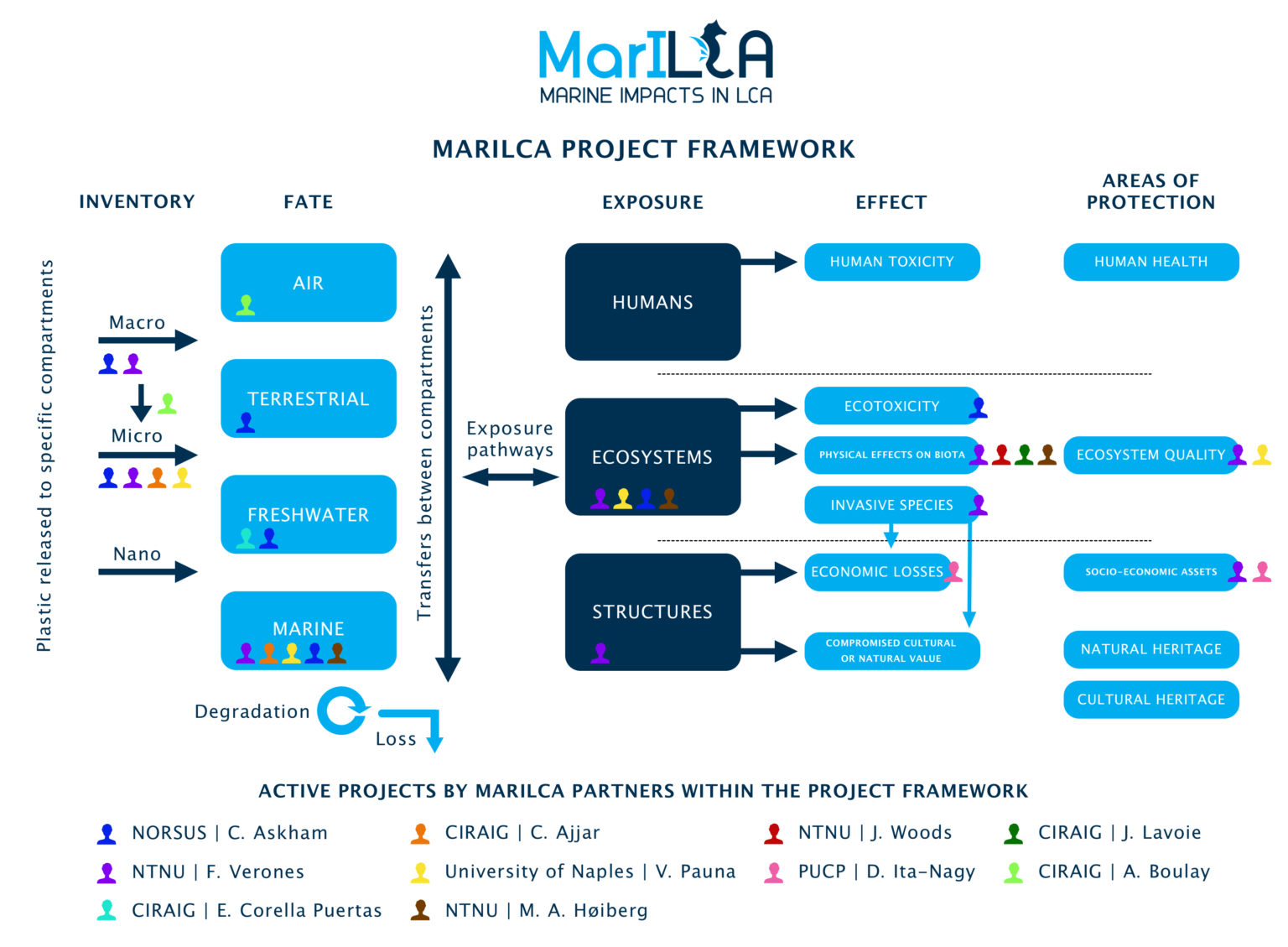Important impact assessment developments of 2020
Despite the unusual year 2020 turned out to be, there have still been plenty of interesting developments in impact assessment methodologies: on toxicity impacts, particulate matter health impacts, water use impacts, marine impacts, elemental resource scarcity, compaction and water erosion impacts on agricultural soils, and planetary and regional boundaries. This article was written by Laura Golsteijn with contributions from Peter Fantke, Christopher Oberschelp, Anne-Marie Boulay, Rickard Arvidsson, Thomas Sonderegger, and Anders Bjørn.
Toxicity
A long-standing question in LCA is how to best assess emissions and toxicity-related impacts of pesticides. Recent efforts from an international team of researchers, companies and public institutions provide a broad summary of available data and assessment methods. They also outline requirements for adapting current practice to pesticides applied under tropical conditions and show how LCA pesticide emission and crop residue models can be consistently combined. Stay tuned, as there is more to come from the ongoing OLCA-Pest project.
Another important question is how to quantify the exposure of pollinating insects to agricultural pesticides and their related ecotoxicity impacts in LCA. An international team from the University of Milano-Bicocca, the Technical University of Denmark, the University of Michigan, and the EU Joint Research Centre developed a fully mass-balanced impact pathway model to address this question. The model has already been tested in a case study on honeybees exposed to two pesticides applied to rape seed. More research is needed to extend it to cover the wide range of pesticides, crops, and pollinator species.

Also published last year is the multi-impact category method LC-IMPACT, which aims to provide a global life cycle impact assessment methodology for the three main areas of protection (human health, ecosystem quality and resources), including spatially differentiated information wherever necessary and feasible.
In the next year, several updates are foreseen for the scientific consensus model USEtox based on global consensus-building recommendations of the UNEP/SETAC Life Cycle Initiative’s work on Global LCIA Guidance. This includes the consistent integration of consumer and worker exposure, and updates in the calculation of human toxicity and ecotoxicity effect factors.
Particulate matter health impacts
Current impact assessment methods for human health impacts from particulate matter (PM) do not cover multiple important determinants at the same time (for instance: spatial and temporal effects of weather patterns, variations in background pollution levels, non-linear pollutant chemistry, stack heights, and/or population densities). Considering that the results of most LCA studies are dominated by PM human health impacts and global warming impacts, this is an important limitation of existing methodologies. Researchers from ETH Zürich developed a model that allowed them to calculate PM characterization factors at high spatial and temporal resolution.

The results clearly show that characterization factors vary by more than four orders of magnitude based on location and time of emission – and that this variation cannot be covered adequately with current methodologies. An increased spatial and temporal resolution is necessary to quantify the disproportionally large impact reduction potentials in Central Europe (mostly in Germany, Netherlands, and Belgium) and Asia (Indonesia, India, China).
Sector-specific water use impacts
Following the global consensus and international uptake of the AWARE methodology for water use impacts at the midpoint level, additional sector-specific variants have been developed. These sector-specific AWARE factors are useful when the nature of the activity is known but the spatio-temporal resolution of the water inventory is not at the native scale of the AWARE factors (monthly and watershed-specific). Boulay et al. (2019) subdivided the agricultural sector in 26 crops, Northey et al. (2018) looked at the mining sector and Karimpoor et al. (2020) tackled the electricity sector in the US. In addition, sub-national factors, using political boundaries instead of watershed boundaries, were re-calculated to improve the ease of use when watershed details are not known (Boulay & Lenoir, 2019). Updates are also available on the WULCA website.
Marine impacts
The MarILCa working group was set up in collaboration between the Life Cycle Initiative and FSLCI in late 2018. Their goal is to foster the development of marine impact assessment in LCIA, starting with plastic litter. Since its beginning, the group has focused on developing the impact pathways framework, which you can discover in a presentation on their webpage and is detailed in a paper currently under review (Woods et al). In addition to this framework, the MarILCa group has launched several projects, some of which are nearing completion. Also under review is the paper from the project of Jérôme Lavoie (CIRAIG), who developed effect factors for the physical impacts of nano and microplastics on the aquatic biota. His work was presented at SETAC SciCon and LCIC conference and will be available on the MarILCA website soon. The different project groups working on the framework pathways are described here.
Elemental resource scarcity
Researchers from Chalmers University of Technology published a method to assess elemental resource scarcity, called the ‘crustal scarcity indicator’ (CSI). Their aim was to provide a long-term (>100 years) perspective on the use of elemental resources from the Earth’s crust. It is a midpoint-level impact assessment method with global coverage, measured in kg silicon equivalents. The original article provides characterization factors (‘crustal scarcity potentials’ (CSPs)) for 76 elements. A follow-up report provides another 500+ factors. The CSPs are based on crustal concentrations, which are stable parameters not expected to change even over longer time periods. At the same time, crustal concentrations have been suggested to correlate with several important resource metrics (such as reserves, reserve base, and ore deposits), thereby constituting proxies for long-term global elemental scarcity. Critical evaluation of the method and its factors led to the conclusion that it reflects long-term global elemental scarcity comparatively well, while requiring a minimum of assumptions and input parameters.
Compaction and water erosion impacts on agricultural soils
Following up on the compaction method that was featured in one of the 2019 updates, researchers from ETH Zürich published methods for the assessment of compaction and water erosion impacts within the same framework, which can be expanded with additional degradation processes in the future. Their methods assess potential long-term impacts from agricultural activities on the production capacity of soils and can distinguish between different management choices such as machinery selection and tillage practices. These factors were applied in a simplified global case study and in a more detailed global assessment (Sonderegger et al. submitted). In both cases, results showed that potential impacts of compaction and water erosion caused by agricultural activities are considerable, and that they depend on what is cultivated where and how. This confirms the potential value of the presented framework and methods for agricultural LCAs, because they allow for assessments that consider differences in management choices and regional vulnerabilities.
Planetary and regional boundaries
In the context of the planetary boundaries framework, researchers from Polytechnique Montreal/CIRAIG (Canada) and the Unilever Safety and Environmental Assurance Centre (United Kingdom), with contributions from other institutions, developed spatially resolved characterization factors for impact categories related to this framework. This will allow comparison of regional impacts to regional boundaries. The development focused on freshwater use and nitrogen emissions factors. In their work, the researchers also identified challenges and opportunities for developing factors related to land-system change. A PhD student is currently working on actual factors for land-system change. Finally, the researchers demonstrated how the spatially resolved characterization factors may be applied to typical LCI, involving many inventory flows with little or no spatial information, and how impact assessment results may be aggregated across life cycle processes.
If you are interested in reading more about any of these developments, follow the links or contact us. Are you a researcher working on something that might be relevant to share? We are always happy to hear about new developments, so do not hesitate to reach out.
Laura Golsteijn
Senior Consultant
I am eager to increase the environmental awareness of our society, and I believe that everyone can contribute to a more sustainable world, every day. At PRé we provide companies with both the knowledge and the tools to improve their products and services. I am excited to work for an organisation that is involved in developing sustainable initiatives.
